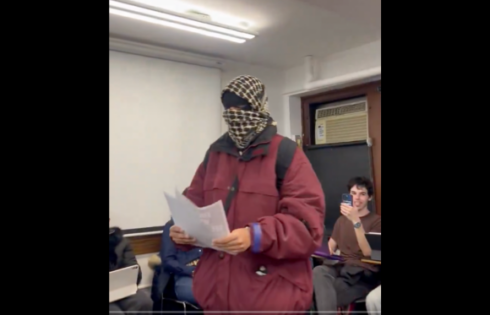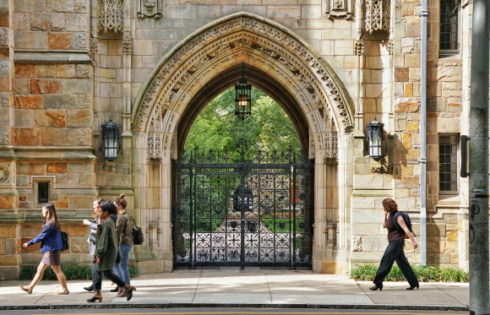
White artist ‘is particularly recognized as a muralist focused on themes of social justice,’ according to court documents
A Vermont private law school can permanently conceal campus murals some deem racist without infringing upon the artist’s rights, a court ruled Friday.
“Merely ensconcing a work of art behind a barrier neither modifies nor destroys the work,” the Second Circuit Court of Appeals wrote in its opinion affirming the decision of a lower court.
In December 2020, mural artist Sam Kerson sued the Vermont Law School for threatening to cover a campus mural he painted in 1994 depicting the state’s role in helping freed slaves via the Underground Railroad, The College Fix reported.
Kerson, who is white and now lives in Quebec, argued his mural, Vermont, The Underground Railroad and Vermont and the Fugitive Slave (pictured), is protected by the Visual Artists Rights Act, according to The Fix.
The 1990 federal law provides that a visual artwork’s “author” may have a limited right to “prevent any intentional distortion, mutilation, or other modification of that work which would be prejudicial to his or her honor or reputation,” according to Cornell Law School’s Legal Information Institute.
However, the court ruled Friday that such protections did not apply in this case.
“Authors of qualifying works of visual art may invoke VARA [the Visual Artist Rights Act] to prevent the modification and destruction of their art, albeit with some exceptions,” according to the decision.
However, “because VARA does not afford artists a categorical right to demand that their works remain on display, we affirm the judgment of the [lower] district court,” the court stated.
Vermont Law School community members have complained about the murals’ depiction of black people since 2001 or earlier.
“Among the concerns, viewers perceived the Murals as depicting enslaved African people ‘in a cartoonish, almost animalistic style,’ … with ‘large lips, startled eyes, big hips and muscles eerily similar to ‘Sambos’ or other racist . . caricatures,'” according to the decision.
“Some also took issue with the Murals’ depiction of’ ‘white colonizers as green, which disassociates the white bodies from the actual atrocities that occurred,’ it continued.”
The VLS Diversity Committee considered removing the panels based on the objections in 2013 or earlier.
In the summer of 2020, more than 100 students, alumni, faculty, and staff sent a petition to VLS President (then Dean) Thomas McHenry demanding the artwork’s removal.
At first the school planned to paint over the mural, consisting of two panels painted directly on the walls of the Chase Community Center.
Later, “upon learning of the limitations imposed by VARA,” the school asked Kerson to remove the mural, according to the decision. When Kerson determined it could not be taken off without damage, the school used a cloth curtain and later fabric panels to conceal it.
Kerson, who has been working as an artist since the 1970s, “is particularly recognized as a muralist focused on themes of social justice,” according to the court.
His public work for VLS comprises scenes representing the history of American slavery, from Africans enslaved in their home continent through the U.S. abolitionist movement.
Kerson told The College Fix in February 2021 the art pieces “are the only mural statements of the abolition movement in Vermont.”
“They are an important acknowledgement of Vermont’s role in Black history and we object to their being covered during this time of memory and reflection,” he said, referring to Black History Month.
Glenn Berger, a member of the VLS Board of Trustees, told The Fix in an email in 2021 that he endorsed the community’s complaints.
The board is “supportive of and sympathetic to the many students, faculty and staff, and other members of the VLS community who find the mural offensive because of how it caricatures enslaved Africans specifically and casually stereotypes Black bodies in general,” Berger told The Fix.
MORE: College censors art exhibit with content warning, curtains following complaint
IMAGE: Samuel Kerson
Like The College Fix on Facebook / Follow us on Twitter






Please join the conversation about our stories on Facebook, Twitter, Instagram, Reddit, MeWe, Rumble, Gab, Minds and Gettr.